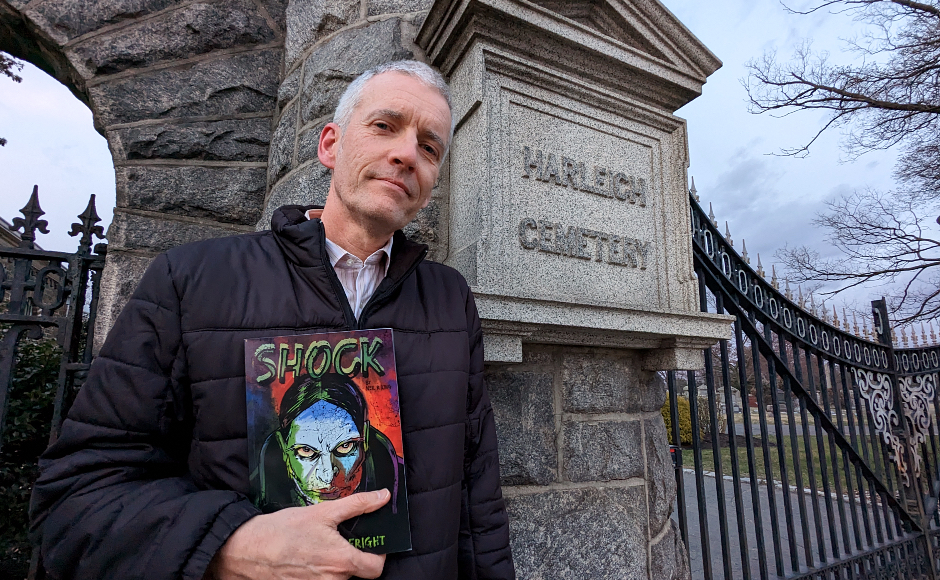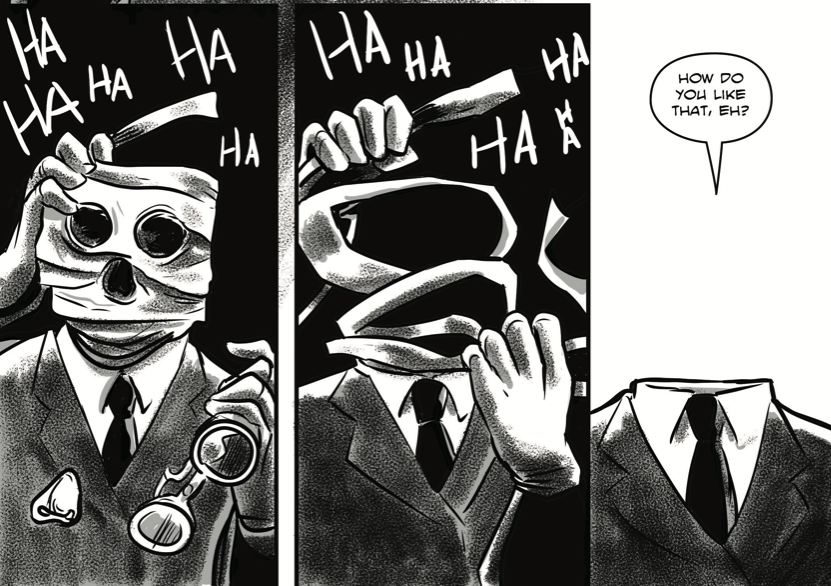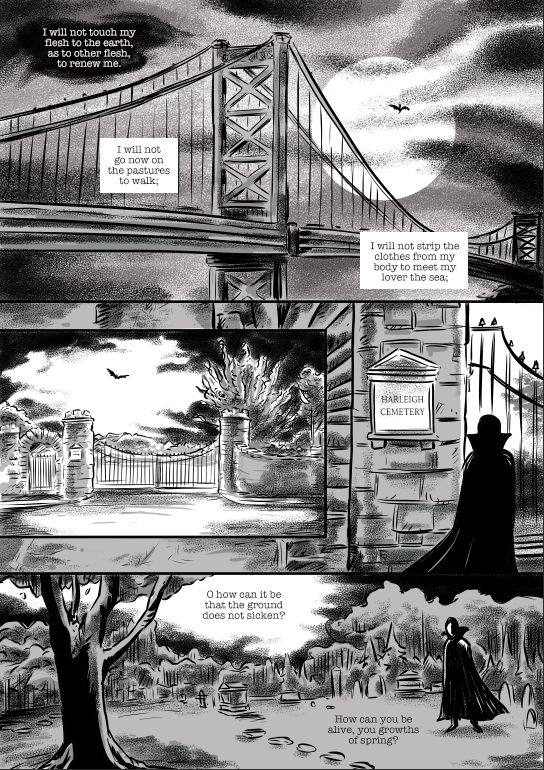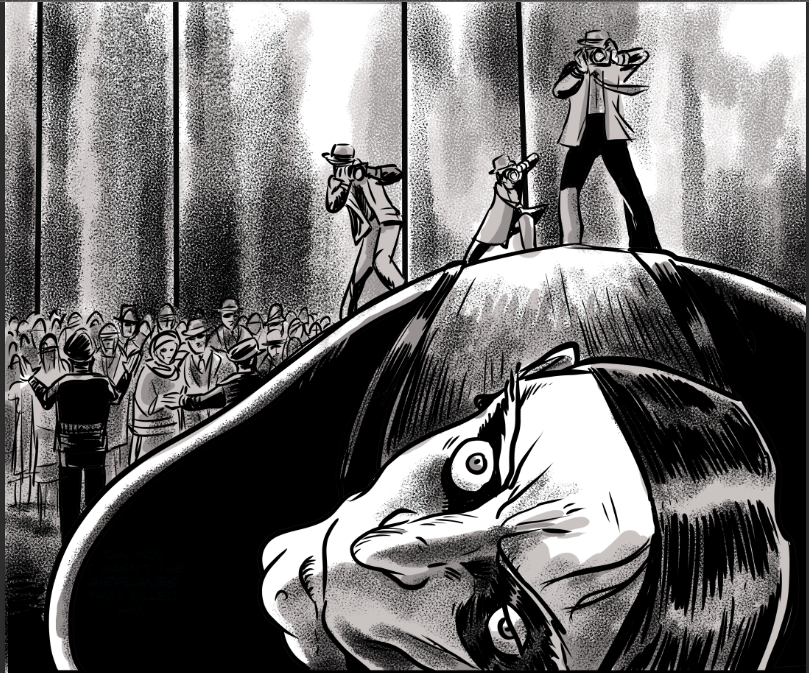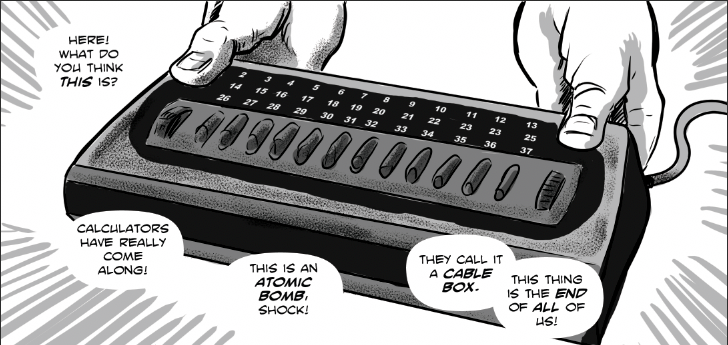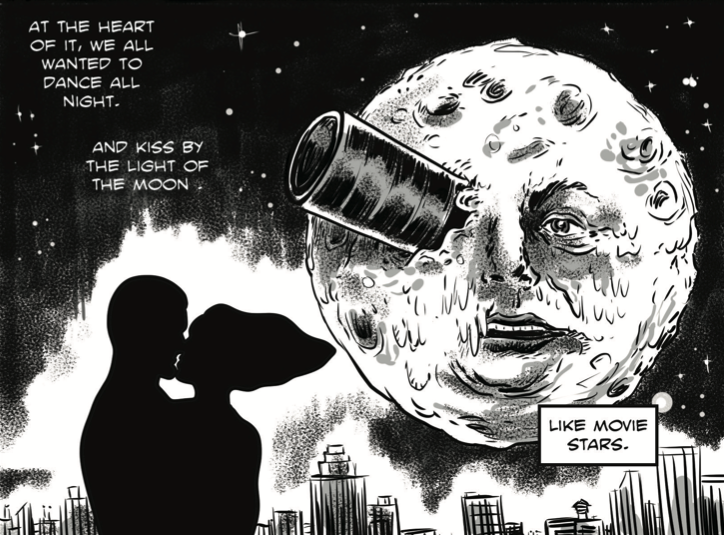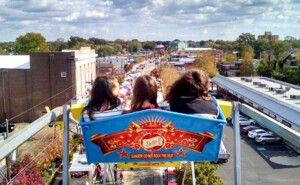Before cable TV, Neil King spent his childhood watching ‘Dr. Shock’ introduce low-budget horror movies to the Delaware Valley on WPHL-17. His graphic novel imagines the person behind the camera.
By Matt Skoufalos | March 14, 2023
For the better part of a decade, Philadelphia native Joseph Zawislak entertained local television audiences throughout the Delaware Valley on WPHL-17.
A magician with a flair for vaudeville-style comedy, Zawislak hosted B-movie programming blocks Scream-In, Mad Theater, and Horror Theater as “Dr. Shock,” an undead jokester who performed skits around the films themselves.
He died young, at just 42, leaving behind a wife, Sylvia, and five children.
In the time he was on the air, Zawislak touched thousands of lives, many of them children’s, both from the broadcast studio and in person, at any number of countless public appearances. Among them was Collingswood illustrator Neil R. King, who watched Dr. Shock from his childhood home in Stratford.
King has self-published SHOCK, a speculative biography of Zawislak’s final days as a network television host whose programming block is headed for cancellation at the dawn of the cable era. He spoke with NJ Pen about creating the book, his memories of Dr. Shock, and how the character gave him room to explore his own preoccupation with death.
This interview has been edited and condensed for print.
NJ PEN: Obviously, Dr. Shock was an important figure in your childhood. What prompted the idea of telling his story in comic form?
NEIL R. KING: I’ve thought of it for years. Part of it is having grown up at a certain time. I was born in 1964. I always think of myself as this bridge between the Baby Boomers and those coming out of it. My whole memories are about those 1930s horror films, Universal monster movies; I still watch those things.
Part of it is YouTube wormholes. There’s not that much information about the guy. I read a couple of things in this little book that was written about him, but it was mostly pictures.
I’d forgotten that he died in 1979, but it also reminded me that that’s when a lot of cable had come out. When he died, I stopped watching as much TV, and the local stuff that I would have watched as I was growing up, that was all going away.
NJ PEN: There is that connection between the man and the lifespan of his TV career, as you present it here. Dr. Shock, is a distinct kind of television personality that only existed for a certain time. But as you show in the book, he made a deep connection with kids, and parlayed that into personal appearances that he shaped into an entertainment career.
KING: This guy really was one of the last lead-ins for kids. You always had some sort of host who would introduce you. For him to do three- and four-minute segments, 12 minutes a week; some slight amount of time, it really was quick. He’d have somebody come on and they’d do vaudeville skits, magic tricks; we didn’t realize how small the budgets were.
It was such a simple little thing. But when he was dead, there wasn’t anyone left. I think there was Captain Noah; nationally, there was Captain Kangaroo. But all of those guys were gone. All of those shows were gone. It was over.
We have a singular figure that was of a time, of his time, and his time was abruptly ended because of cable. I really felt like I knew him; that I knew him as somebody who lived a life like this. For the book, I moved in this direction of a guy who knows he’s going to die, and he’s reflecting on all the things he loves.
NJ PEN: You point out that both Zawislak and his father died young, in their early forties. And in the book, you play with the symmetry of him making the Dr. Shock character into a reflection of his existential dread.
KING: My thought was that Zawislak was pretty sure he was going to die; I think he had had a minor heart attack before he had the major one that killed him.
These were children of World Wars; that generation, how unhealthy everybody was, and all that stuff in the background that was happening — I tried to do the thoughts of somebody who imagines death all the time.
It is a continuing theme for me. I’m sure it’s because I’m a child of the 70s.
I was an altar boy. Coming from a big Irish family, I’ve been to lots of funerals from a young age.
I think growing up around it, you make a little fun of death because you’re quite aware of it, and it’s there. With Dr. Shock, I think that’s the same thing he would have been like. You make fun of death because you know it could be close, or you know someone else who died.
It probably is my most autobiographical work. Bringing myself back into those types of images — that whole thought, as a kid, about what’s going to happen in your future, what’s the world really like — those weird films, I did try as much as I can to show that they had some type of real meaning to people. It’s not like those movies were great movies, but everything about it, I just want to feel.
NJ PEN: The book feels very lived-in. There are Philadelphia landmarks like the Midtown II, Franklin Square, Pat’s Steaks; an argument about sprinkles versus jimmies, cheesesteaks consumed; a whole sequence in which the main character flies into Harleigh Cemetery to have a conversation with Walt Whitman. You obviously know these places and what it feels like to walk around them.
KING: It’s the most referenced piece that I’ve ever done. I really tried to make it look like places around here. I am a person who started without computers, so my reference had to come from books. This book is my way of saying, “What would a 1970s limousine look like? Or a hearse?” I can draw anything, but you give me reference, and all of a sudden, it’s a place.
NJ PEN: For as concrete as the visual imagery is that anchors the book, there is a lot of artistic license at play in both the story you’re telling and the story your protagonist is telling. Some of the biggest visual moments come from Dr. Shock describing his own life in images from monster movies. He inhabits the forms of Dracula, or the Wolfman, or King Kong, and there’s a sense that he’s trying to both reconcile where he fits in with these cinematic experiences as well as feeling his time on television ending.
KING: In a lot of ways, it allows you to accept all the crazy things in the story.
Did Sally Starr come to save him from the zombies? Maybe this isn’t real, maybe this is real, and then you’re brought through it.
The show was getting pushed off the air by Phillies baseball; that was a real thing.
He was an older commodity at that time, but who knows how much longer he would have been on? That cable box changed everything for these little markets.
But the scene of him in bed [in which he dreams up a procession of people who tell him it’s their turn to live in his house and sleep in his bed]; that’s a big thought that I’ve had for a long time. It was perfect for him. I’ve had those vivid dreams, half-awake, where you think somebody’s in the room.
NJ PEN: You also place Dr. Shock into this pantheon of early children’s programming presenters — Captain Noah, Sally Starr, Chief Halftown, Happy the Clown. It feels like you’re creating a Silver Age superhero group like the Justice League, and using that framing to ask questions about their alter egos.
KING: They used to have a lot of these shows. Happy the Clown, that guy was huge in Philly and some of these areas. He would have a show that’s three hours long, and he would just walk around, talk to kids, show cartoons, and sing “Happy Birthday.” Adam Android ran for one year; it had been another guy years before who had done the same thing for a different station.
I loved Sally Starr the most. I don’t remember watching her, but the very idea that she was this tough customer; to have her come to the rescue, I thought was funny.
NJ PEN: Your Dr. Shock is also very particular about his place in the world. He doesn’t have an appetite for the new horror movies of his time, like The Exorcist or Halloween. He doesn’t want to be seen in public during his (pre-taped) broadcast because he’s worried about spoiling the magic for kids in the audience. These are all imagined details, but they seem to fit. How much of you is in there?
KING: With Dr. Shock, he’s doing his thing, he’s in character. He’s doing a thing, and people need him to be that thing. Not wanting to be seen out when the show’s on, I don’t know if that’s true, but that’s how I would feel.
Working as a teacher, I think that it is my responsibility to be a good person [in the world]. I believe in that. I wouldn’t want some kid to see me in some situation being really mad.
NJ PEN: You are a teacher, but you’re also a prolific artist in your own right. Dr. Shock is at least the 16th book you’ve illustrated. Where does SHOCK fit in with the rest of your catalogue?
KING: I look at most of my work as historic. SHOCK is one little story of many more ideas that I will produce in my life. Someday, my girl will say, “He just used to make these crazy books, and that’s all he cared about.”
I hope when people look at it, that they’re brought through the pages. I feel like I’ve had an experience now to push you through stuff.
NJ PEN: What’s your process like to create these works? How do you find the time to do it after a day of teaching high school art?
KING: I’m on a Wacom tablet. I use Clip Studio Paint, I use Photoshop, and I bring it all together in InDesign.
I only do Kickstarters where I’ve already finished the product. I don’t expect to make a lot of money, but it covers the cost of printing.
It’s hard for me to compare myself to these pro books; I always bring myself back to these 80s and 90s indies. I never thought I needed to be in a mainstream thing. I had my job; I always felt like I was a freelance illustrator, but I started doing my own comics when I became a teacher.
I am willing, when I come home after eight to 10 hours at school, to get at the board for two or three hours a night. I’m always thinking of the next book; I think it’s because of my graphic design background. Because I’m so used to doing these things myself, I’ll just do it.
I teach every day; I go home and I do this because I believe.


